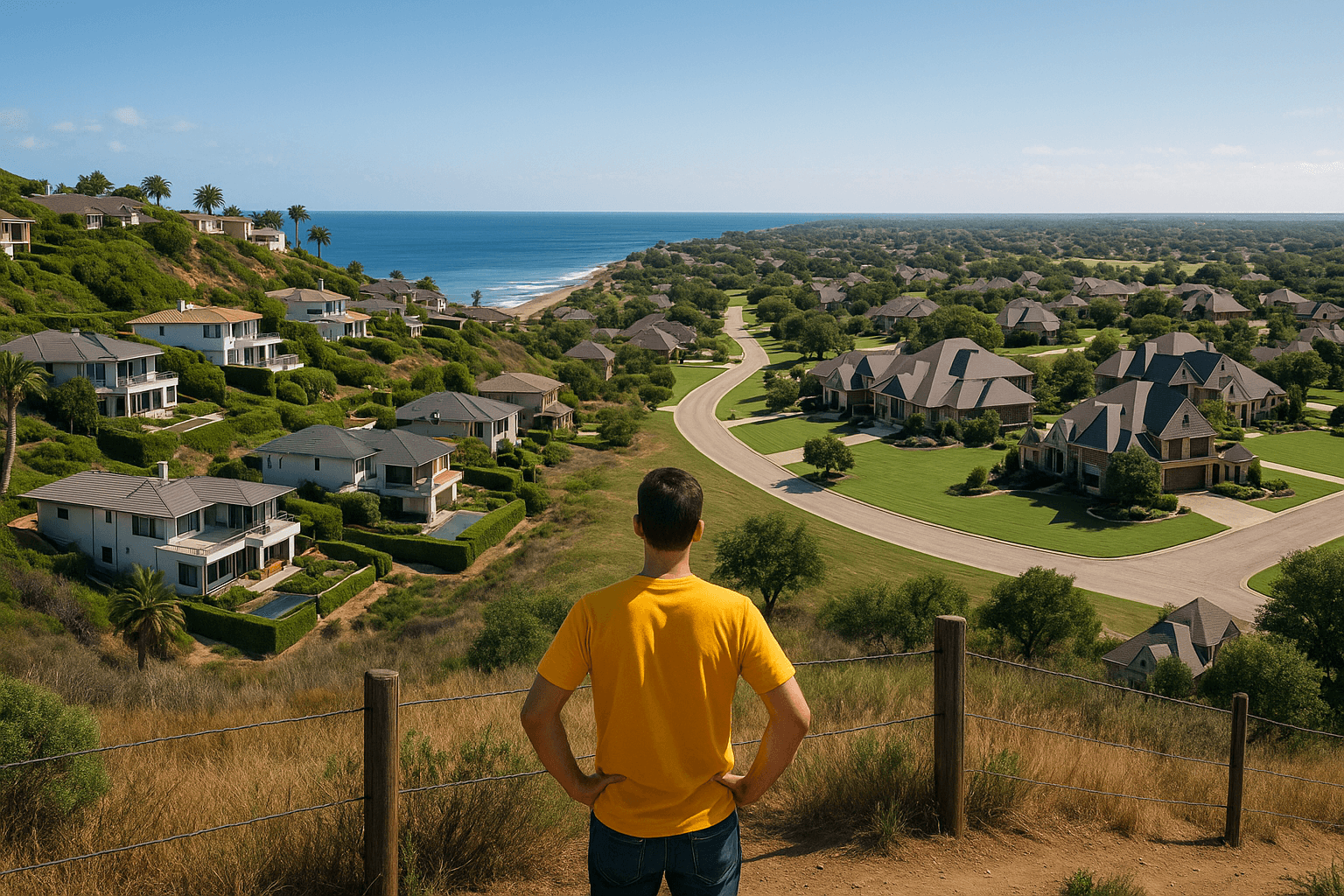Build-to-rent communities are redefining residential real estate—and Texas and California are leading the charge. As single-family homes become less affordable for buyers, entire neighborhoods are being developed specifically for renters. For investors, this model blends the scalability of multifamily with the appeal of single-family living.
Jump to:
- TLDR – Quick Guide
- Detailed Breakdown
- Key Takeaways
- FAQs
TLDR – Quick Guide
- Build-to-rent (BTR) = Purpose-built single-family rental neighborhoods
- Texas = Fast permits, suburban sprawl, low taxes = BTR paradise
- California = High demand, limited land, tough zoning = BTR scarcity + pricing power
- Investors love it = High occupancy, long-term tenants, and institutional interest
Detailed Breakdown
What Are Build-to-Rent Communities?
The Concept
Build-to-rent communities are neighborhoods of single-family homes designed exclusively for renters. These aren’t mom-and-pop rentals—they’re fully managed, amenity-rich, and often backed by institutional capital. Think of it as multifamily meets master-planned suburb.
Who’s Living There?
Millennials priced out of homeownership, remote workers, downsizing boomers, and young families all flock to BTRs. They want space, privacy, and yards—without the mortgage or maintenance. High demand = low vacancy = investor confidence.
Texas: The BTR Capital
Abundant Land, Pro-Growth Policy
Texas cities like Dallas, San Antonio, and Houston are perfect for BTR growth. Fast-track permitting, affordable land, and no state income tax make it an investor-friendly environment. Suburban sprawl supports large-scale developments without pushback.
Institutional Money Flooding In
REITs, private equity firms, and hedge funds are snapping up Texas BTR developments. These investors are attracted to cash flow, appreciation, and scalable operations. Expect this trend to accelerate as renter demand grows.
California: High Barrier, High Return
Zoning Headaches, Sky-High Rents
In California, BTR is harder to develop due to zoning, land scarcity, and red tape. But when it works, it really works. Markets like Riverside, Sacramento, and outer Bay Area suburbs show strong demand with premium rents.
Scarcity Creates Opportunity
Because it’s tough to build, supply remains low—creating pricing power for owners. California BTRs often command higher rents per square foot and attract long-term tenants. While it’s a heavier lift, the payoff can be enormous.
Why Investors Love BTR
Strong Tenant Retention
BTR tenants stay longer than apartment dwellers—on average, 3+ years. This reduces turnover costs and ensures steady income. Families and remote workers prize the lifestyle stability.
High-Yield with Lower Risk
BTR communities enjoy multifamily-style management efficiencies while reducing the maintenance burden. Homes are new, systems are centralized, and expenses are predictable. Combined with strong demand, it’s a dream setup for yield-seeking investors.
Key Takeaways
- Build-to-rent communities are one of the fastest-growing segments in residential real estate.
- Texas leads in volume and speed; California offers scarcity-driven pricing power.
- Investors benefit from long-term tenants, low vacancies, and scalable cash flow.
- With demographic shifts and affordability pressures, BTR is here to stay—and grow.
FAQs
What’s the difference between build-to-rent and traditional rentals?
Traditional rentals are usually one-off homes purchased from the resale market. Build-to-rent homes are purpose-built for rental from day one, often in cohesive communities. BTR includes centralized management, amenities, and streamlined operations.
Why are build-to-rent communities so popular right now?
Home prices and interest rates have made ownership tough for many. BTR offers a home-like lifestyle without the financial commitment. This growing demand is attracting both renters and institutional investors.
Are build-to-rent communities profitable for investors?
Yes—BTR offers higher retention, lower vacancy, and efficient operations. In many markets, yields exceed those of traditional single-family rentals. Institutional interest is pushing values higher as the asset class matures.
Is it easier to build BTR in Texas or California?
Texas, hands down. Faster permitting, cheaper land, and fewer zoning restrictions make it ideal for BTR scale. California projects are possible but face more regulatory friction and cost.
Can small investors participate in BTR deals?
Yes—via syndications, joint ventures, or fractional investment platforms. While many BTR projects are large-scale, some allow accredited investors to buy in. Due diligence is key—partner with experienced developers.




